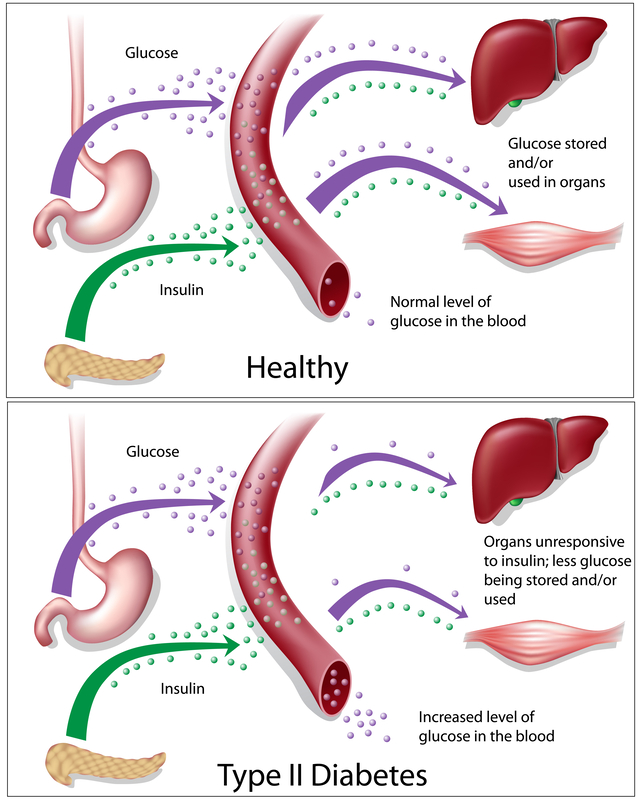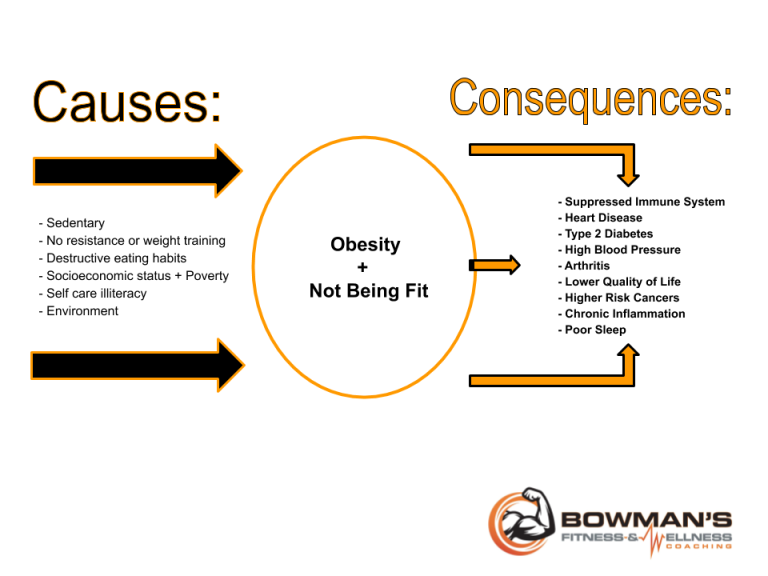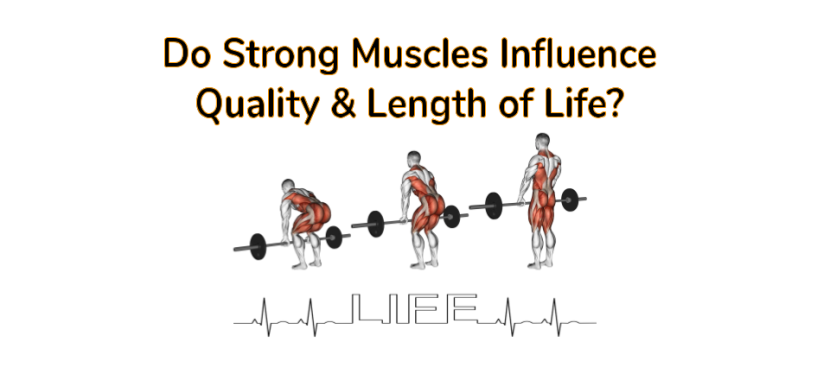In case it may have slipped your mind, one day you’re going to die. And if at large you’re like most Americans that live to the average 79 years of age, your last 20-30 years of life will physically suck with fatigue, pain and disabilities holding you back from enjoying life to the fullest.
In this short article I’m going to show you how weight training can help you to NOT be a common and unhealthy statistic, but rather assist you in enjoying your best life both physically and mentally in a body that literally feels good to live in.
When most sedentary non-gym goers think or speak of others that participate in weight training, vanity often comes to mind as being the primary reason for doing it.
Looking good and improving one’s physique is indeed a result of a consistent weight training program, but the most important benefits derived from going to gym far outweigh the improvements with how we look on just the outside.
I’m going to highlight 7 out of the dozens of awesome benefits that stem from weight training, how it can prolong and improve your life and how you can implement them to help yourself look, feel and be your best.
Sit up straight or better yet, stand up and read on while we run through these real quick.
Okay, lets get at it…
1.) Strong Muscles Influence Quality & Length of Life
 Recent research from the University of Michigan (1) suggests that resistance training may help to prolong your life expectancy. According to the research, maintaining strong muscles has a direct impact on the quality and length of your life.
Recent research from the University of Michigan (1) suggests that resistance training may help to prolong your life expectancy. According to the research, maintaining strong muscles has a direct impact on the quality and length of your life.
Individuals with weaker muscles simply do not typically live as long as their stronger peers (2), according to this analysis published in 2018 from the University of Michigan.
2.) Weight Training Keeps Bones Healthy and Strong
Just like your brain and muscles need stimulus on a regular basis to stay strong, so do your bones. Once we reach the age of about 30 and beyond, bone density is lost due to changes in hormones and the aging process.
We can however, put the brakes on this – BIG TIME. Consistently engaging in regular weight training – especially as we get older, can help tremendously here to help maintain strong and healthy bones while helping to prevent or put the brakes on osteoporosis.
3.) Resistance Training Increases Metabolic Rate + Fat Loss
Muscle is metabolically active. The more you have, the more calories you burn each day – both at rest and during play.
While doing cardio is great and works our most important muscle – the heart, it does not stimulate nor support much on the side of muscle building like weight training does.
If we were to think of your body’s metabolic rate like a thermostat in your house, aerobic (cardio) exercise turns up the heat for about 30 to 40 minutes while you work out.
Weight training however, does not turn up the heat as much during a 30-40 minute session in comparison but does give a very extended “bump in temperature” with extra calorie burning that stays around for a much longer time after.

And again, the more muscle you develop and then have – the higher your resting metabolic rate becomes which equals way more calories burned each day leading to better and leaner, body composition of fat to muscle ratio.
ACE (4) Fitness says to concentrate on the eccentric portion (aka; “negative” phase) of lifting weights. That means the lowering of the dumbbell or barbell, rather than the lifting, or concentric.
When your muscles are damaged from a resistance training session (that’s a good thing), you increase your metabolism; and the easiest way to do that is to lower the weight slowly while fighting the resistance doing so.
4.) Weight Training Helps to Regulate Blood Sugar and Inflammation
This essentially goes hand in hand with building muscles on many levels. You can think of muscles as “storage houses” for circulating glucose and glycogen – simply think of carbs & sugar we consume; they get digested and pushed out into the circulatory system. Then, they need somewhere to go…
Building muscle gives more “places” for glucose to go, be stored (as glycogen) and assists with controlling or helping insulin do its job in stowing glucose away. Being active “burns” or uses up glucose and glycogen as well.
For those that are overweight and at risk of becoming diabetic, weight training to work, strengthen and build muscles can assist the body in controlling glucose and it’s ability to better keep inflammation under control as well.
Inflammation from excessive food consumption, obesity and chronically elevated glucose can be simply envisioned as such (a simplified analogy of sorts); Excess glucose circulating around is similar to sand (glucose in this analogy) grinding across your skin (like inside circulatory system’s arterial walls in this analogy).

Just like if you were to rub a piece of sandpaper across your arm over and over again – it would start to cause damage and become inflamed.
This level of damage would also be dictated by the amount of sand or, grit of the sandpaper; a rough 36 grit sandpaper (chronically high blood glucose) is pretty painful but a 260 grit may not hurt.
This is a bit oversimplified and involves a much more complex sequence of events and more details for the complete story, but this analogy is a simple and probably easier way for the average person to think about it as it pertains to inflammation.
If you must, consuming larger portions of carbohydrates is better done AFTER weight training… Another analogy; think of your muscles as a wet, saturated sponge (assuming your glycogen stores are full in your muscles).
When you workout you wring the water out of them (like depleting glycogen given the energy demands for muscle contractions during a workout).

After the workout, the sponge is now dry and if you expose it or put it in a bucket of water (like exposing glycogen depleted muscle to carbs), it is more likely to “soak up” the water. Similar to consuming carbs after a good, thorough workout – your body will partition the carbs in a more beneficial way for us at that time.
Now, think of this analogy for those that over consume calories, carbs and everything else in sight repeatedly every day and they DO NOT participate in any resistance training and have less than optimal and unused muscle mass on their body…
Exposing an already wet, saturated sponge to more water is not going to result in more water going into that sponge. But the excess water still has to be addressed and put somewhere.
Summarized message here: Eat less sugar and manufactured foods with an emphasis on regular weight training workouts.
5.) Working Out with Weights Helps Posture, Mood, Energy and Sleep
Posture:
Yes, resistance training with correct form and technique can greatly improve and maintain good posture. It may also reduce or prevent chronic back, neck or leg pain… Especially if there are muscle imbalances to correct – which is VERY common among those with these nagging pains!
The most effective way for most to improve their posture is to focus on exercises that involve and strengthen the core, such as the abdominal and low back muscles that connect your pelvis to your spine.
With others, there may also need to be a strong emphasis on strengthening and “tightening up” the upper thoracic region of the back while simultaneously “opening up” and strengthening one’s front shoulders and chest.
Every body is different and should addressed as such and, accordingly to make improvements.
Mood and Energy:
Folks who work out on a regular basis have fewer symptoms of anxiety and depression versus those who are sedentary. This goes true for both aerobic and aerobic training (5, 6).
You’ve heard of the “runner’s high”, yes? Weight training essentially does the same with triggering all those good feels!
Sleep:
Not only does resistance training assist with sleeping better but some researchers say it helps you fall asleep much faster and even more deeply. The correlation here is that deep sleep and muscle growth have an inter-dependency.
For example; deep sleep supports your body’s hormone balance, which matters – A LOT. Your body wants to repair and grow. Training with heavy weights elevates our anabolic hormones – specifically testosterone, growth hormone and insulin-like growth factor (IGF-1), which are used to repair muscle fibers damaged during exercise.
I am personally a testament to all these, but especially sleep! Bombs could go off in my backyard and I would probably still sleep through the noise! Given my weight training is consistent, I’m a very deep sleeper for sure.
6.) Resistance Training Reduces Risks of Falls and Injuries
Did you know that 50% of seniors who fracture their hip from falling typically don’t live past two years following the accident? Sadly, this happened with my grandmother who is very missed. Her health and time here on earth was accelerated quickly downhill after having a fall like this.
Have you ever started to slip on a patch of ice only to catch yourself with quick reaction time to prevent yourself from falling and breaking a leg, hip or cracking your skull?
Well, that doesn’t always happen with those that are frail and weak without that kind of strength and reaction time in situations like this. The outcome often leads to a debilitating injury to an already vulnerable body, magnifying the downward spiral of one’s health and quality of life in a situation like this.
Unfortunately, accidents like these happen too often and sadly can be prevented by staying active and engaging in regular resistance training to stay strong and sharp.
Maintaining good balance and strength with resistance and functional training gives aging individuals the ability to implement good equilibrium, muscle balance and reaction time to avoid falls and injuries (7).

Muscle mass can deteriorate quickly with age. Lack of strength is a big clinical marker for functional dependence with many in our aging population today. This would include the ability to walk up and down stairs to carrying groceries into the house or climbing a ladder to put in a light bulb.
Very simple tasks that we take for granted become a big challenge for sedentary individuals later in life with a huge risk of having a life altering injury. Things like this are often so preventable but sadly end up exacerbating physical ailments to new and unbearable levels for many.
A few suggestions on starting a workout program here below:
- Resistance-training programs should be performed 2-3 times per week, with three sets of 8-12 repetitions at an intensity that starts at 20%-30% and progresses to 80% of 1 rep max.
- To optimize the functional capacity of individuals, resistance training programs should include exercises in which daily activities are simulated, such as the sit-to-stand exercise.
- Emphasizing unilateral movements (one limb at a time – like lunges) that challenge and improve balance are key.
7.) Regular Weight Training Decreases Risk of Disease
We already highlighted that weight training can protect against osteoporosis, and type 2 diabetes via controlling insulin and blood glucose.
Regular bouts of resistance training can also help prevent heart disease, stroke (14), Parkinson’s (10), osteoarthritis (15), multiple sclerosis (13), rheumatoid arthritis and cancer (11).
Because strength training increases lean muscle mass, it gives your cardiovascular system places to send the blood being pumped. This results in less pressure on your arteries, which helps reduce the chances of heart-related problems – given a healthy BMI.
Weight training helps to increase HDL cholesterol – the “good” cholesterol, and to reduce blood glucose and insulin levels as previously mentioned. The same kinds of benefits can be seen in people who already have heart disease, so it is never too late to start!
 Resistance training is often utilized with success when incorporated into cancer recovery programs also. It supports muscle mass and overall weight, which is often lost during cancer treatments.
Resistance training is often utilized with success when incorporated into cancer recovery programs also. It supports muscle mass and overall weight, which is often lost during cancer treatments.
Here are some helpful tips and things to consider as it pertains to diet and cancer: Click HERE
America’s lifestyle habits and lack of being fit are being exposed more than ever before. For years and still till this day, heart disease, cancer and their ties to obesity and lifestyle habits have topped the mortality charts and still dwarf the Covid-19 numbers – even though we aren’t hearing much about it.
But, nothing has exposed the status of our health and fitness like what we’re seeing in currently. We have choices and the ability to improve here. Let’s choose to do so!
Weight Training 101: The Basics
For many, starting a program and then staying consistent with a resistance training program can be a big challenge. However, keeping it all simple and not over thinking things too much is key.
If you’re really unsure of what to do or how to approach working out safely and effectively, seek out a qualified and certified personal trainer. This can be money well spent, provide a ton of benefits and save you a lot of time or, frustration from making common mistakes in your workouts that may even increase odds of getting injured.
You can search for a qualified personal trainer near you that is certified and with verification of it and/or any other degrees and credentials here below:
And also, two more short and helpful reads below as it pertains to your approach to weight training…
- Here are the 5 most effective exercises that are a “must” in your workout program – Click HERE
- Your body type may matter, as it pertains to your approach and program – Click HERE
Summary
Many are intimidated by public gyms. Others hold back due to the costs or the culture gyms are perceived to be, all of which I can empathize with if so.
But, you should get excited by acknowledging that anyone can do basic body weight exercises like push-ups, lunges, squats, triceps dips, sit-ups or pull ups in their own home or local park and potentially many of the same health and longevity benefits.
Currently, not enough of us are reaping these potentially life-saving benefits from resistance training. Does this apply to you?
If so, are you going to decide to make that change for the healthier, better and more fit version of yourself? To be the positive influence on your kids, your family and other loved ones around you?
Do you feel like you need a personal trainer to work with you in person? Or, maybe an online personal trainer to work with remotely?
If you feel like you need some structure, accountability and professional guidance with getting started with a resistance training program and suspect that I could help you do so, shoot me a message by going here ⇒ to my Contact Page.
Simply bullet point what your goals are, your biggest obstacles, your best attributes and how you suspect I can best help you.
Thank you for visiting my site today, I appreciate it. Every day we wake up is something to be grateful for.
Every day we rise up in a fully functioning body is something we are fortunate to have, as not everyone does.
Respect your body, its the only one you have. Value your health. Treat yourself with love; you deserve it and so do those around you that rely on you and love you.
Healthy regards,
References:
- https://www.macrotrends.net/countries/USA/united-states/life-expectancy
- https://news.umich.edu/people-with-low-muscle-strength-more-likely-to-die-prematurely/
- https://ihpi.umich.edu/news/why-weight-training-ridiculously-good-you
- https://www.acefitness.org/education-and-resources/lifestyle/blog/6090/slow-metabolism-8-things-that-slow-down-your-metabolism/?utm_source=Rakuten&utm_medium=10&ranMID=42334&ranEAID=TnL5HPStwNw&ranSiteID=TnL5HPStwNw-G0Xl0vOqy.RyKqf279UAqQ
- https://www.mayoclinic.org/diseases-conditions/depression/in-depth/depression-and-exercise/art-20046495
- http://www.blackdoginstitute.org.au/wp-content/uploads/2020/04/5-exercise_depression.pdf?sfvrsn=8
- https://www.ncbi.nlm.nih.gov/pmc/articles/PMC3344816/
- https://www.ncbi.nlm.nih.gov/pmc/articles/PMC3634155/
- https://www.cdc.gov/chronicdisease/resources/infographic/physical-activity.htm
- https://www.sciencedirect.com/science/article/abs/pii/S0966636211008381?via%3Dihub
- https://www.thieme-connect.de/products/ejournals/abstract/10.1055/s-0029-1225330
- https://academic.oup.com/aje/article/187/5/1102/4582884
- https://journals.sagepub.com/doi/10.1177/1352458512437418
- https://www.sciencedirect.com/science/article/pii/S1836955318300195?via%3Dihub
- https://www.ncbi.nlm.nih.gov/pmc/articles/PMC3606891/
- https://rogerbowman.com/2016/03/31/4×4-cancer-rules/#more-208
- https://www.supplementcritique.com/personal-trainers-survey/
- https://masculinewellness.com/starting-an-exercise-program-101/



You must be logged in to post a comment.